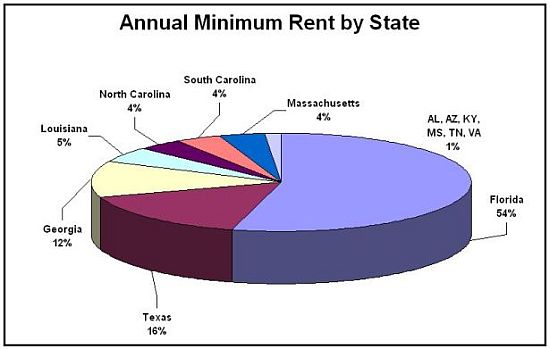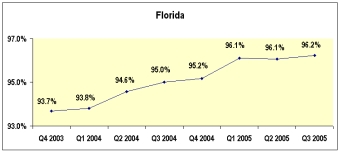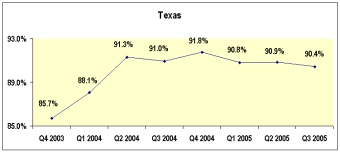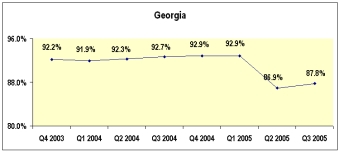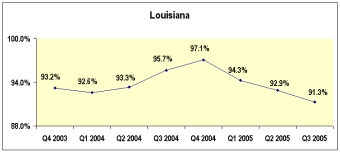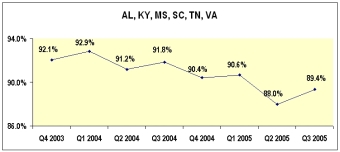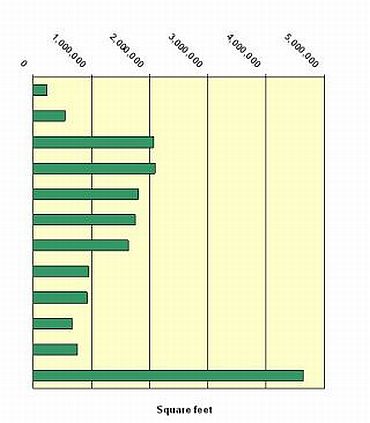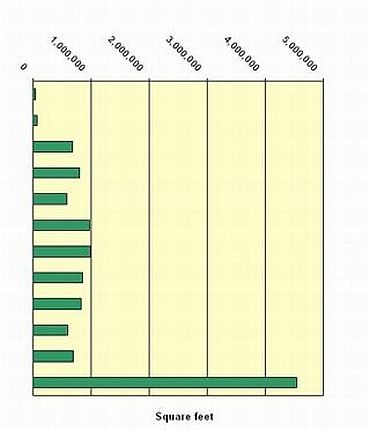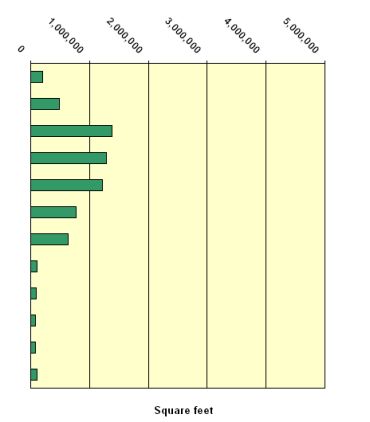EQUITY ONE, INC. AND SUBSIDIARIES
DISCLOSURES
As of September 30, 2005
Forward Looking Statements
Certain information contained in this Supplemental Information Package constitute forward-looking statements within the meaning of the federal securities laws. Although Equity One believes that the expectations reflected in such forward-looking statements are based upon reasonable assumptions, it can give no assurance that these expectations will be achieved. Factors that could cause actual results to differ materially from current expectations include changes in macro-economic conditions and the demand for retail space in Florida, Texas, Georgia, Massachusetts and the other states in which Equity One owns properties; the continuing financial success of Equity One's current and prospective tenants; continuing supply constraints in its geographic markets; the availability of properties for acquisition; the success of its efforts to lease up vacant space; the effects of natural and other disasters; the ability of Equity One to successfully integrate the operations and systems of acquired companies and properties; and other risks, which are described in Equity One's filings with the Securities and Exchange Commission.
Basis of Presentation
The information contained in the Supplemental Information Package does not purport to disclose all items required by GAAP. The Company 's Form 10-K for the year ended December 31, 2004 and Form 10-Q for the period ended September 30, 2005 should be read in conjunction with the above information. The results of operations of any property acquired are included in our financial statements since the date of its acquisition.
Use of EBITDA as a Non-GAAP Financial Measure
EBITDA is a widely used performance measure and is provided as a supplemental measure of operating performance. We compute EBITDA as the sum of net income before extraordinary items, depreciation and amortization, income taxes, interest expense, gain (loss) on disposal of income producing properties, and impariment of real estate. Given the nature of the Company's business as a real estate owner and operator, the Company believes that the use of EBITDA as opposed to earnings in various financial ratios is helpful to investors as a measure of our operational performance because EBITDA excludes various items included in earnings that do not relate to or are not indicative of our operating performance, such as gains and losses on sales of real estate and real estate related depreciation and amortization, and includes the results of operations of real estate properties that were sold or classified as real estate held for sale either during or subsequent to the end of a particular reporting period, which are included in earnings on a net basis. Accordingly, we believe that the use of EBITDA as opposed to earnings in various ratios provides a meaningful performance measure as it relates to our ability to meet various coverage tests for the stated periods.
EBITDA should not be considered as an alternative to earnings as an indicator of our financial performance, or as an alternative to cash flow from operating activities as a measure of our liquidity. Our computation of EBITDA may differ from the methodology utilized by other companies to calculate EBITDA. Investors are cautioned that items excluded from EBITDA are significant components in understanding and assessing the Company's financial performance.
Use of Funds from Operations as a Non-GAAP Financial Measure
We believe Funds from Operations (FFO) (combined with the primary GAAP presentations) is a useful supplemental measure of our operating performance that is a recognized metric used extensively by the real estate industry, particularly REITs. NAREIT stated in its April 2002 White Paper on FFO, "Historical cost accounting for real estate assets implicity assumes that the value of real estate assets diminishes predictably over time.Since real estate values have historically risen or fallen with market conditions many industry investors have considered presentations of operating results for real estate companies that use historical cost accounting to be insufficient by themselves." FFO, as defined by NAREIT, is "net income (computed in accordance with GAAP), excluding (gains or losses) from sales of property, plus depreciation and amortization, and after adjustments for unconsolidated partnerships and joint ventures. Adjustments for unconsolidated partnerships and joint ventures will be calculated to reflect funds from operations on the same basis."
We believe that financial analysts, investors and stockholders are better served by the presentation of comparable period operating results generated from our FFO measure. Our method of calculating FFO may be different from methods used by other REITs and accordingly, may not be comparable to such other REITs. FFO is presented to assist investors in analyzing our operating performance. FFO (i) does not represent cash flow from operations as defined by GAAP, (ii) is not indicative of cash available to fund all cash flow needs, including the ability to make distributions, (iii) is not an alternative to cashflow as measure of liquidity, and (iv) should not be considered as an alternative to net income (which is determined in accordance with GAAP) for purposes of evaluating our operating performance. We believe net income is the most directly comparable GAAP measure to FFO.
* The indicated line item includes amounts reported in discontinued operations (except for any gain/(loss) on the disposal of income producing property).
All prior figures have been restated to reflect the effects of reporting for discontinued operations

